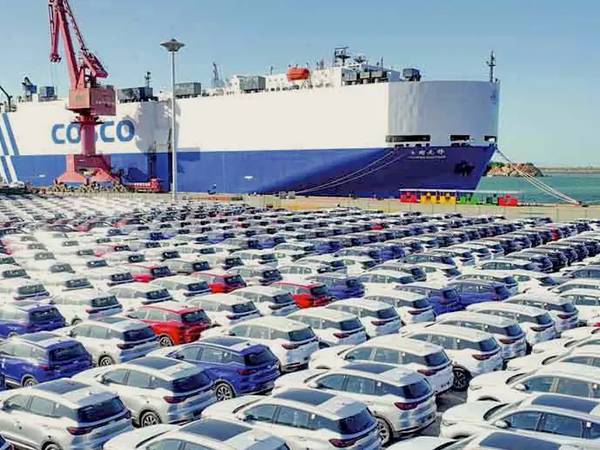In the final days of Ebrahim Raisi's administration, an announcement was made that promised to revolutionize the Iranian car market when the cabinet approved a plan to lift the ban on the import of used foreign cars.
The government spokesperson declared last week that Iranian citizens could now import used foreign cars without any restrictions, sparking initial excitement among the media and the public. However, as the details of the plan unfolded, the enthusiasm quickly dissipated.
Stringent restrictions undermine the policy
The regulations accompanying the plan revealed a series of restrictions that cast doubt on the feasibility of the new policy. Among them were stipulations that the cars must be between 3 to 5 years old, have an engine capacity limited to 2500 cc, and must not be imported from the United States. Additionally, imported cars could not be sold for five years. Most critically, the foreign currency used for the purchases had to come from "profits from exports or foreign investment."
Economic realities and ‘hypocrisy’
Currently, the cheapest domestic car costs between $7,500 to $10,000, while the majority of imported cars are low-quality Chinese models priced as high as European or Japanese cars. For instance, a Cherry Tiggo 8 Pro Max SUV costs $50,000. Other Chinese cars, like the Lamari EAMA produced by Dongfeng Liuzhou Motor, assembled in Iran, sell for $31,000. Brands like Great Wall Motors, Baic, FAW, and JAC also import parts for assembly, with prices ranging from $20,000 to $40,000.
Farhad, a Tehran resident, speaking to Iran International, said the move would not benefit Iranians. We cannot reveal his full name due to security reasons. "We cannot say this move benefits the people. Due to sanctions, they [government] can't access oil money from China, forcing them to import Chinese cars. This new policy will not benefit individuals and is hypocritical.”
Impractical requirements for foreign currency
Ahmad Aghaei, the Deputy Minister of Transportation, clarified that the currency needed for purchasing the cars must originate from abroad and be approved by the Central Bank, limiting those with access to benefit from the new policy.
"The importer must have a foreign currency account or currency outside the country to buy the car. Those who have their currency within the country will face restrictions from the Central Bank for sending the currency out of the country," he added. This requirement further limits the average Iranian's ability to benefit from the policy highlighting the plan's impracticality.
Public outcry and media criticism
In conversations with Iran International, many Iranians dismissed the plan as deceptive. “It is a lie. If you want to import a car, you have to export goods. How many people have the ability to export in order to afford a car?” said Mahmoud from Karaj.
The Iranian news agency Tabnak also pointed out the “deceptive” nature of the plan, stating that the regulations only benefit a small group of exporters, reinforcing the monopolistic market of state-owned car manufacturers.
Financial struggles of domestic manufacturers
In February, the Minister of Industry, Mine, and Trade, Abbas Aliabadi, called for more funds for the country’s two main government-controlled automakers: Iran Khodro and SAIPA. These companies face financial difficulties due to high inflation, and despite government claims, car prices have risen in the market over the past year.
Iranian auto industry experts report that state-owned carmakers are incurring daily losses of $3.7 million, totaling over one billion dollars annually, a direct result of government interventions in the auto industry. The quality of domestically produced cars is also a significant concern, with majority of road deaths in Iran involving drivers of these low-quality vehicles.
According to economic journalist Arash Hassan-Nia, Iran Khodro and Saipa are nearly bankrupt, with around $2.5 billion in accumulated losses. “Due to their managerial and ownership structures, they are unable to improve the quality of their current products,” he earlier told Iran International.
The car mafia and election politics
Ali Khosravani, vice president of the Tehran Automobile Dealers Union, previously highlighted the role of the "car mafia" in Iran, which he described as the main obstacle to new entrants in the car market. This shadowy group maintains a tight grip on the market, further complicating any genuine reform efforts.
During the presidential election debates, president-elect Masoud Pezeshkian questioned why Iranians should be forced to drive substandard cars under the guise of supporting national production.
His rival, Saeed Jalili, made a controversial claim in response saying that “People in Russia wait six months in queues for the Iranian-made Samand vehicle,” a claim ridiculed on social media.
Many now say that the recent decision to import second-hand cars is another “propaganda efforts in the final days of the Raisi government, adding one more item to their list of achievements.”
A slogan with no substance
The new car import regulations in Iran, while initially promising, reveal a complex web of restrictions and inconsistencies that ultimately leave the monopolistic market of state-owned car manufacturers intact. The majority of Iranian citizens remain unable to benefit from the changes, highlighting the gap between government promises and the harsh economic realities on the ground.
Observers believe that the promotion of "one car import for every single Iranian" is clearly a “populist” slogan, as few people have the financial means to import a car, leaving the public disillusioned once again.
